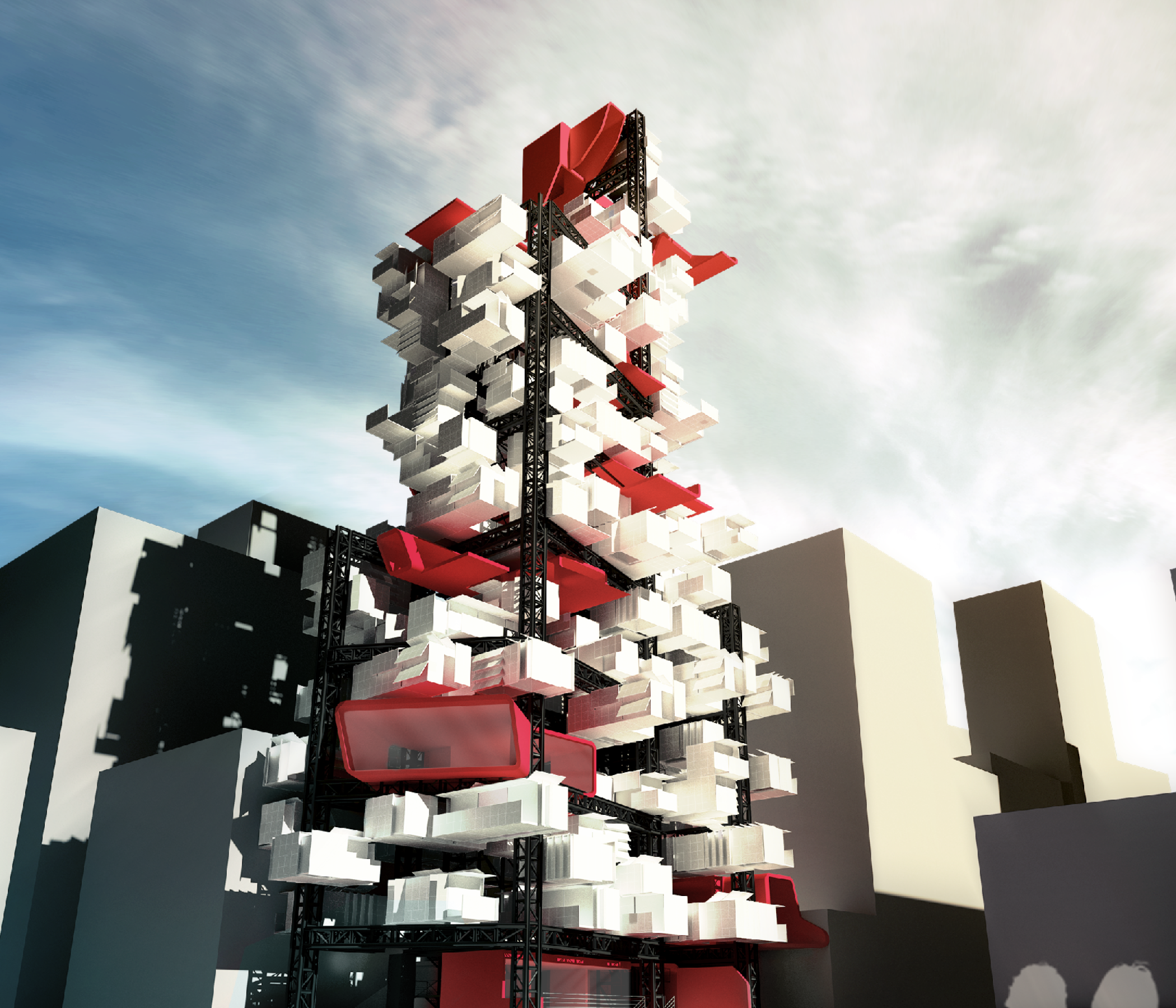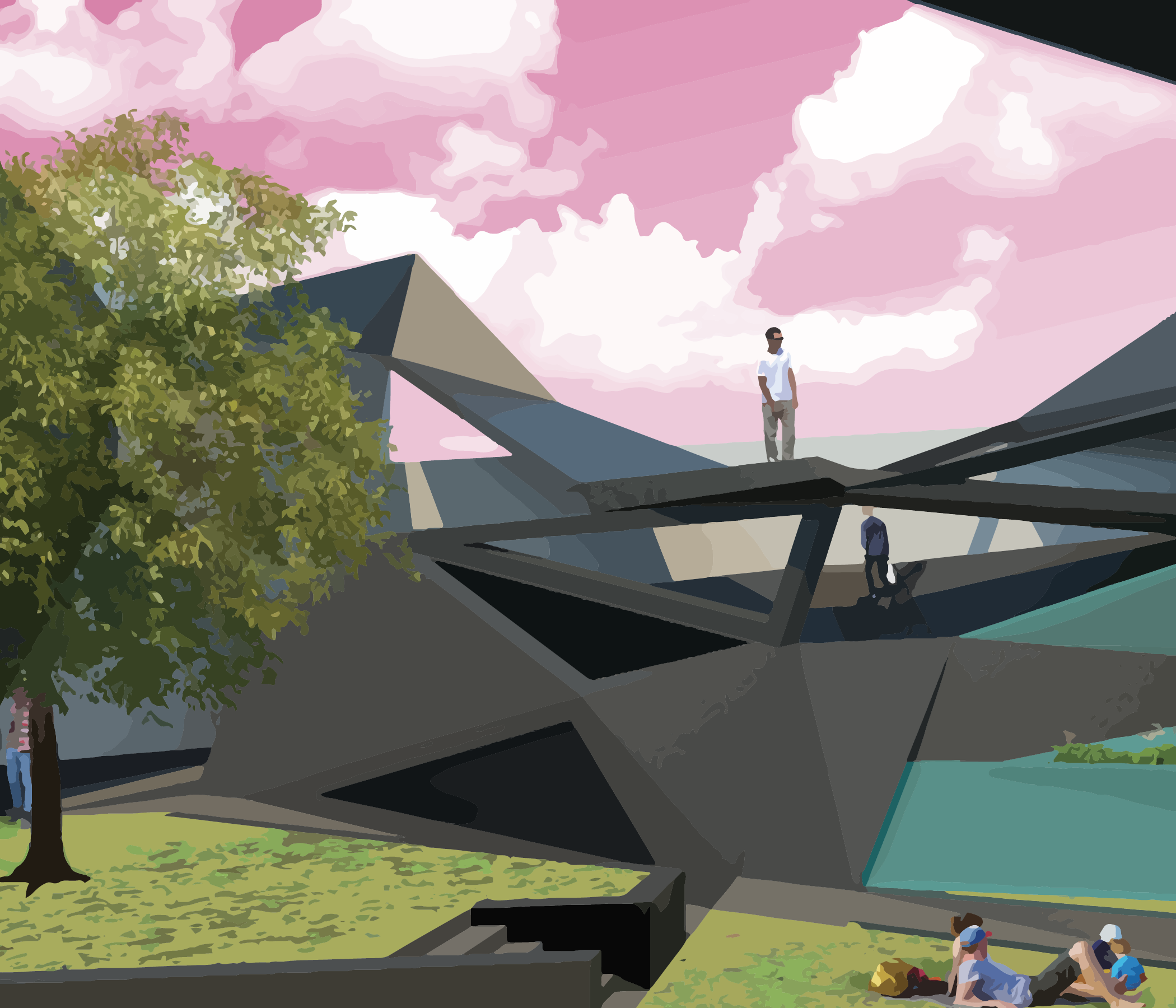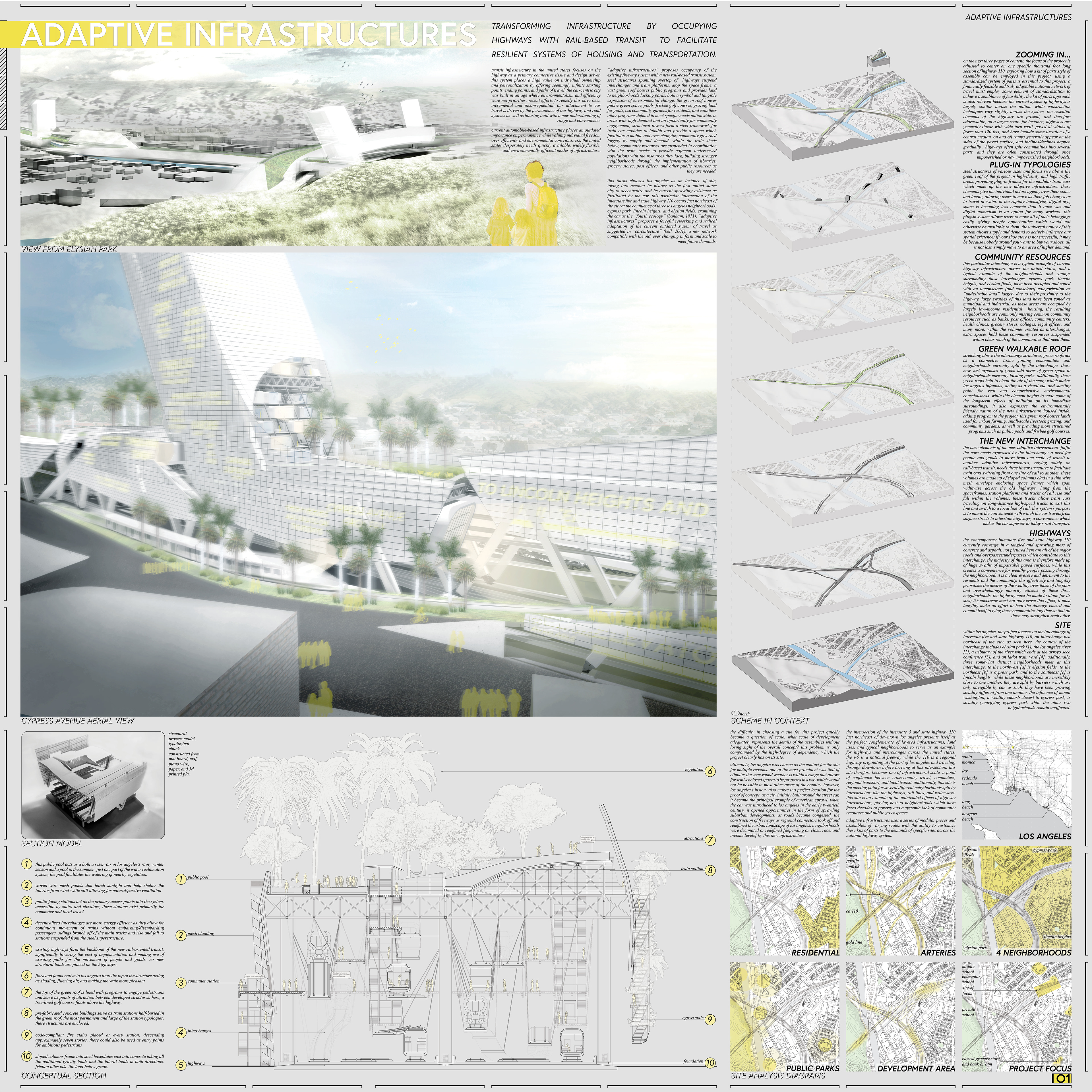

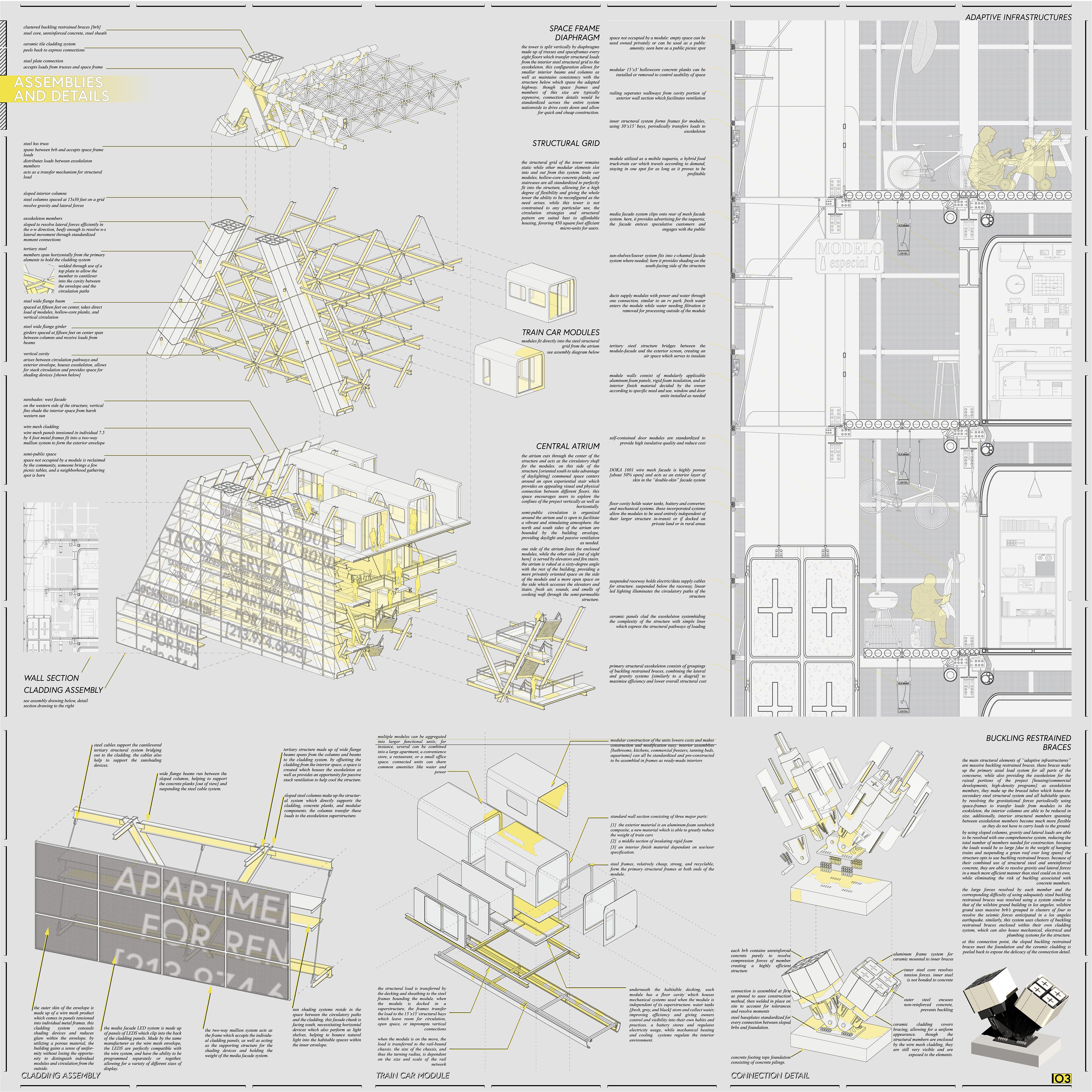

winter and spring quarters, 2020 cal poly, studio yin
cal poly third year best of show winner, 2020 acsa steel competition open category honorable mention, 2020
Abstract
Transit infrastructure in the United States focuses on the highway as a primary connective tissue and design driver. This system places a high value on individual ownership and personalization by offering seemingly infinite starting points, ending points, and paths of travel. The car-centric city was built in an age where environmentalism and efficiency were not priorities; recent efforts to remedy this have been incremental and inconsequential. Our attachment to car travel is driven by the permanence of our highway and road systems as well as housing built with a new understanding of range and convenience.
Current automobile-based infrastructure places an outdated importance on permanence while valuing individual freedom over efficiency and environmental consciousness. America desperately needs quickly available, widely flexible, and environmentally efficient modes of infrastructure.
“Adaptive infrastructures” proposes occupancy of the existing freeway system with a new rail-based transit system. This effort will occur gradually, beginning with an insertion of commuter and local rail and culminating in a national system of high-speed rail to replace car-driven transit. The system is punctuated by transportation hubs as centers of travel, commerce, industry, and community. Each hub is constructed as a framework for the programs which occur inside, confronting new fast-paced and nomadic cultural and socioeconomic norms by envisioning programs as temporary installations amid a permanent structure
Winter Quarter: Concepts and Research

Site and context analysis
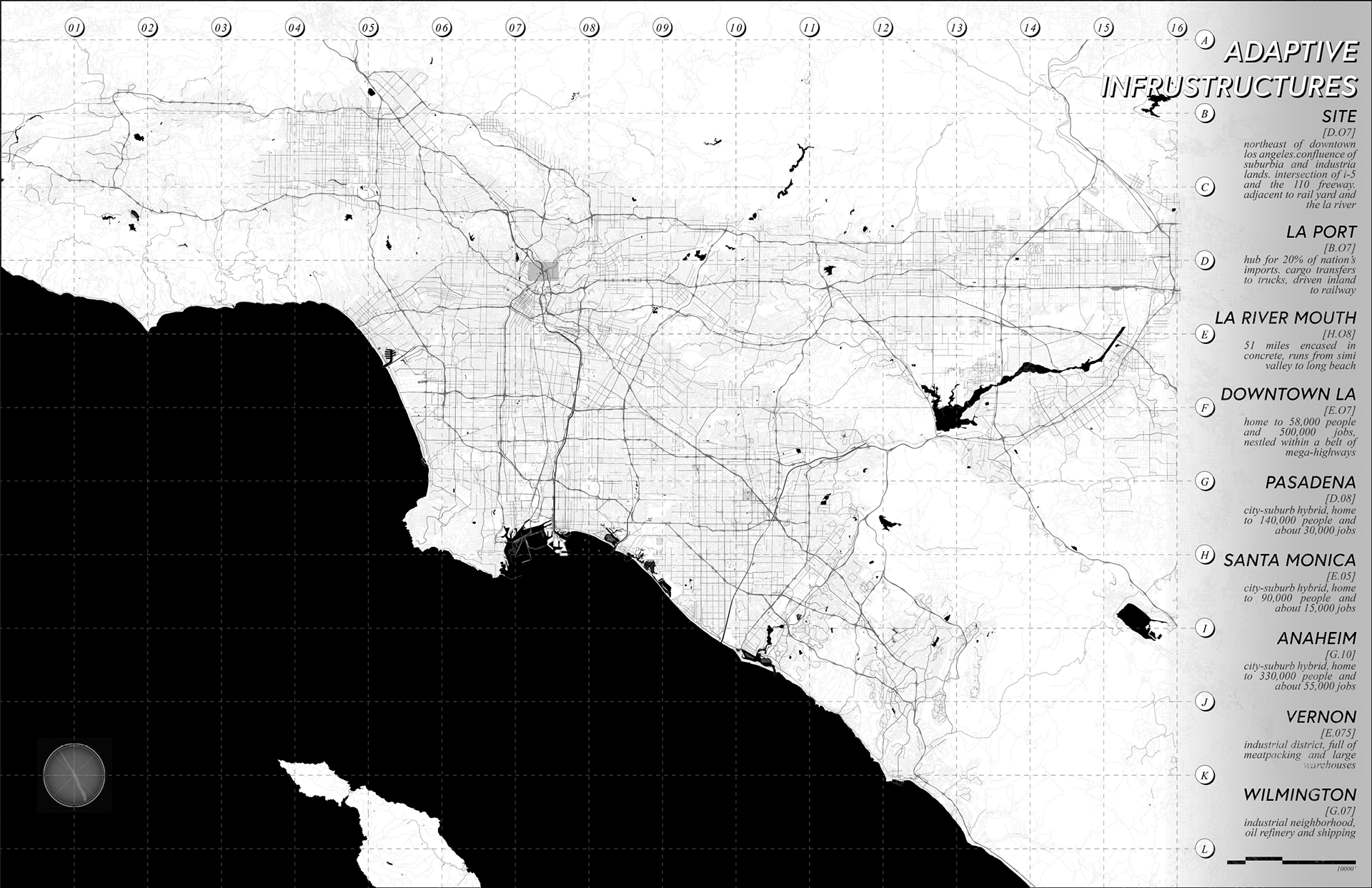
Site and context analysis
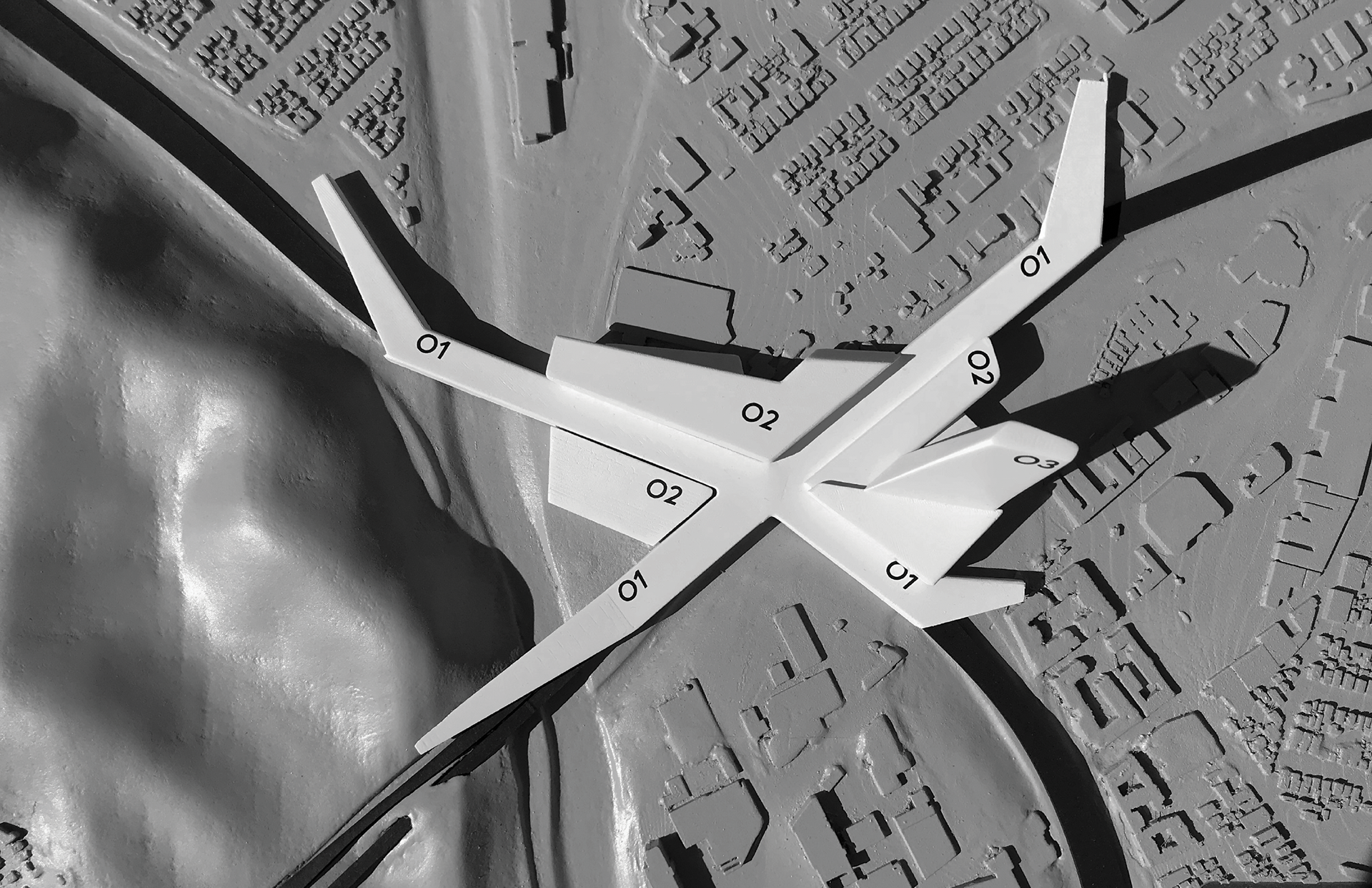
Site model, initial massing concept
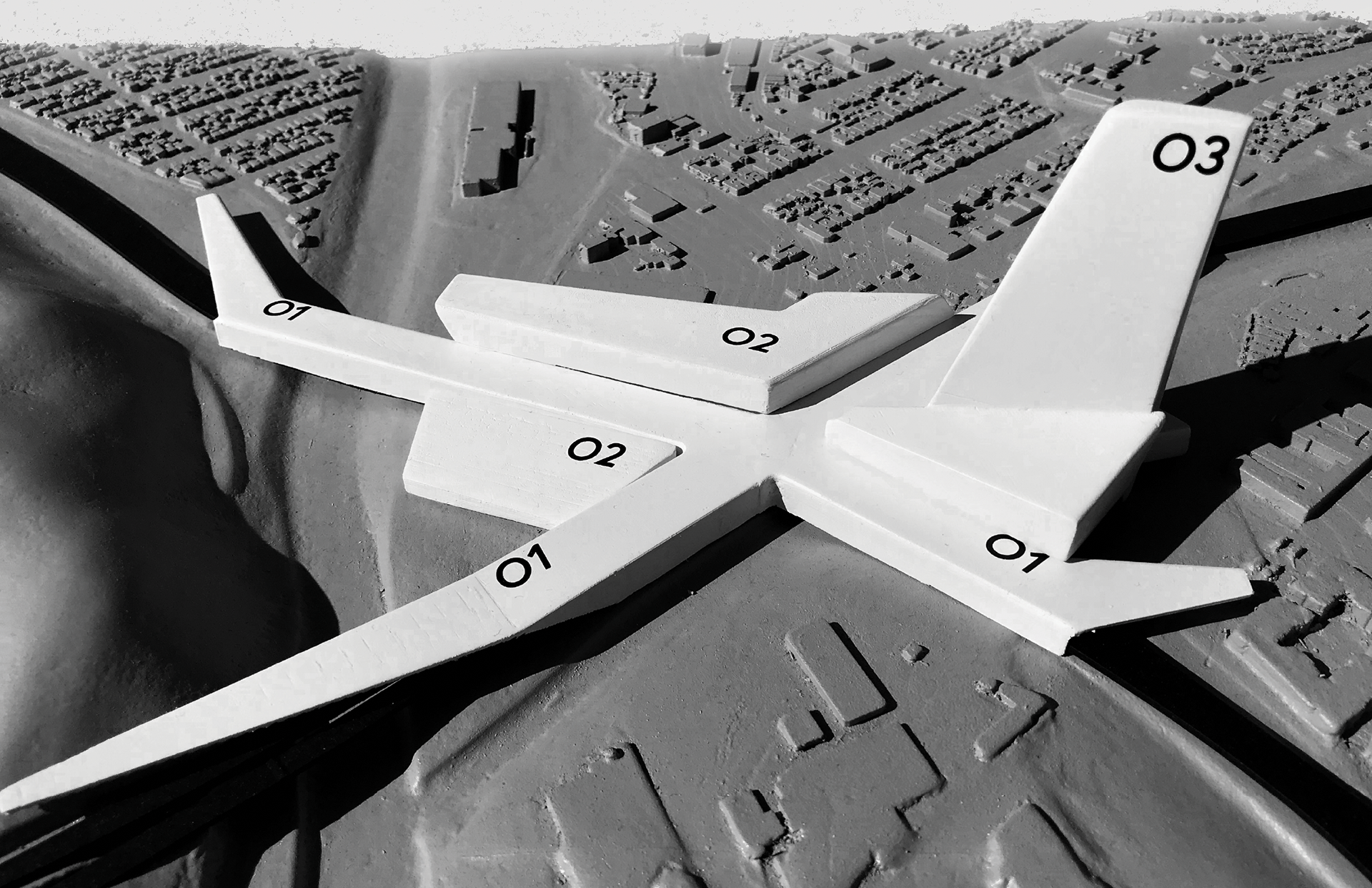
Site model, initial massing concept
Site
At a highway interchange northeast of downtown Los Angeles, state road 110 meets interstate I-5 in a soaring entanglement of concrete and tarmac. Commuter traffic, long distance travelers, and heavy trucking compete for paved real estate. Below, freight and Amtrak trains thunder through as the LA river winds beneath in its concrete prison. Directly adjacent lie warehouses and big box stores, suburban neighborhoods, a massive park, dodger stadium, and a rail yard.
The 110 is a state highway local to Los Angeles. Less than 32 miles long, it runs from Pasadena to the LA port and passes through downtown Los Angeles. The 110 exists to shuttle commuters into Los Angeles and to carry harbor freight inland from the port to the rail yards.
I-5 runs from Mexico to Canada, passing through California, Washington, and Oregon. It is a primary thoroughfare for freight, tourism, and other long-distance travel on the West coast.

Conceptual Axonometric showing scheme and implementation
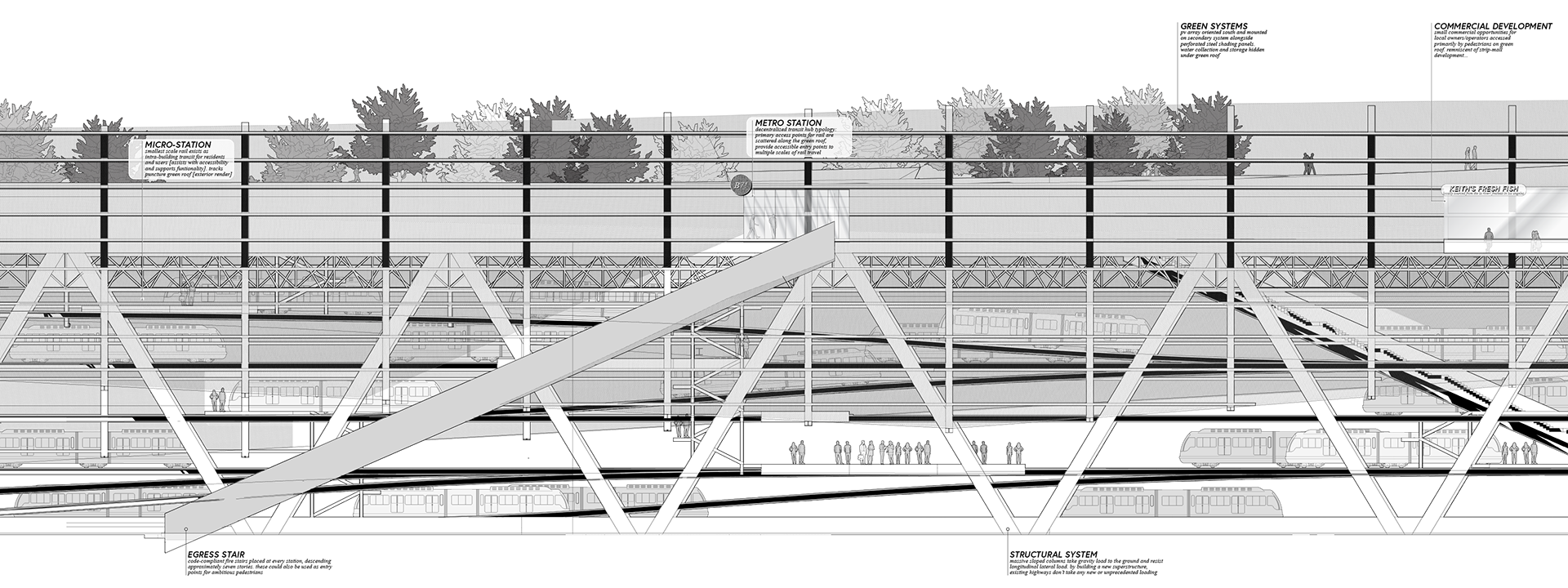
Conceptual elevation: front
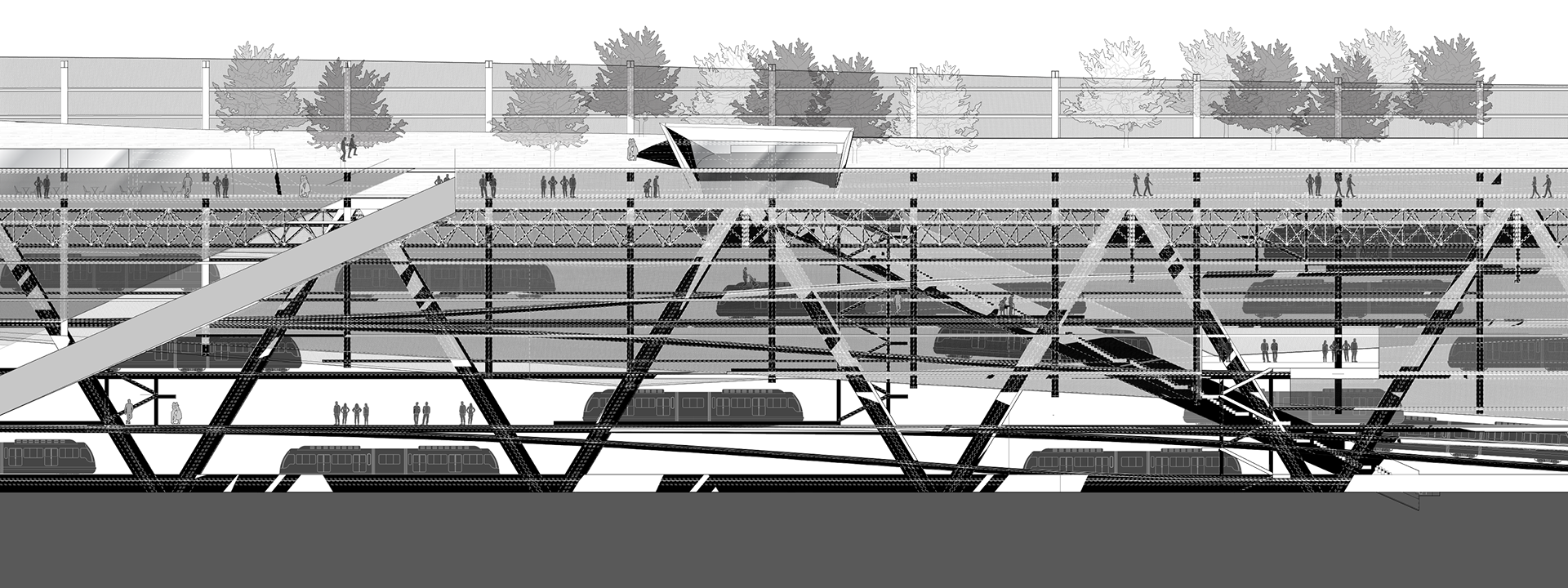
Conceptual elevation: rear
Conceptual Render: Green roof public park
Conceptual Render: Train Platform
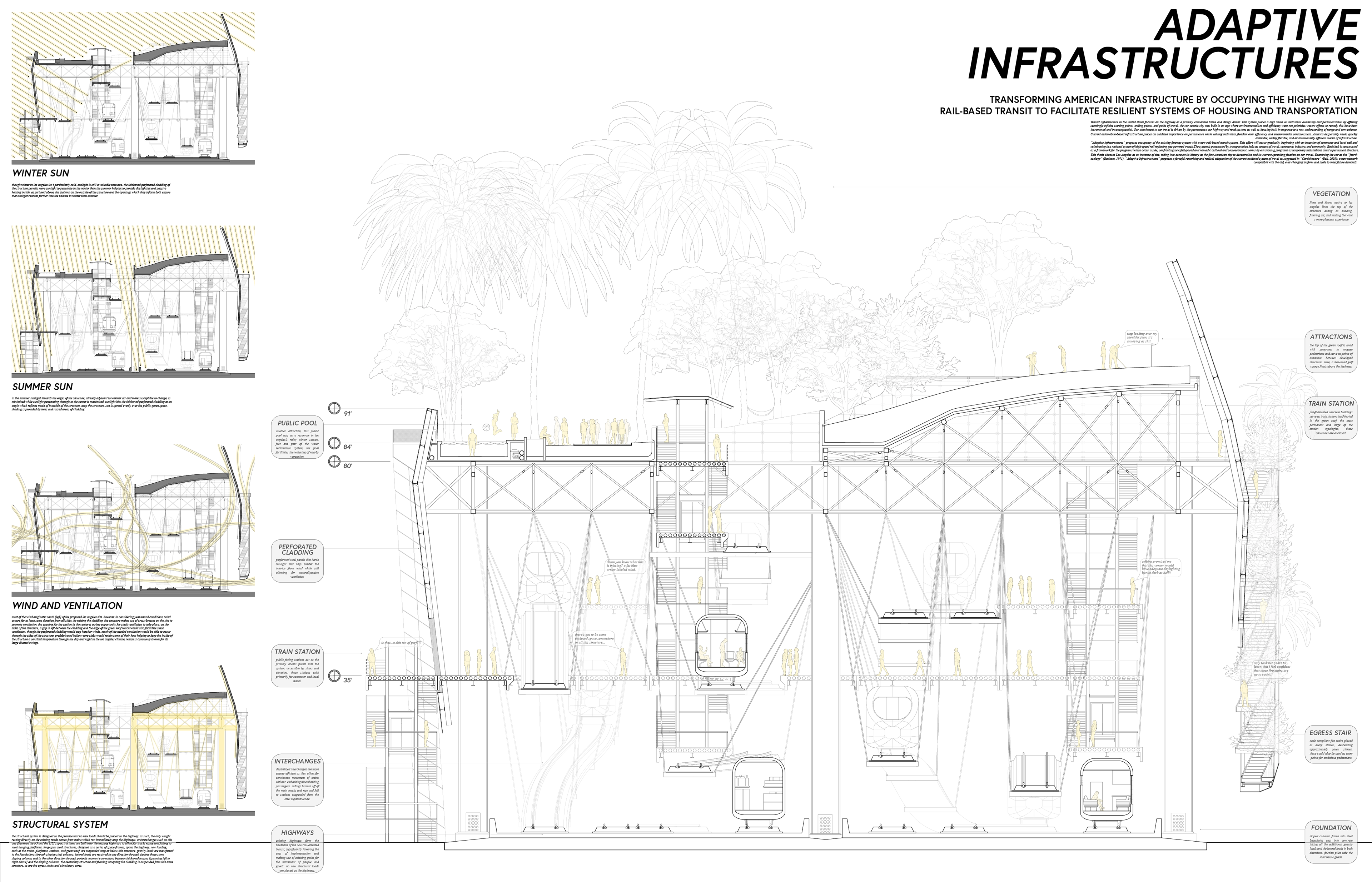
Conceptual section
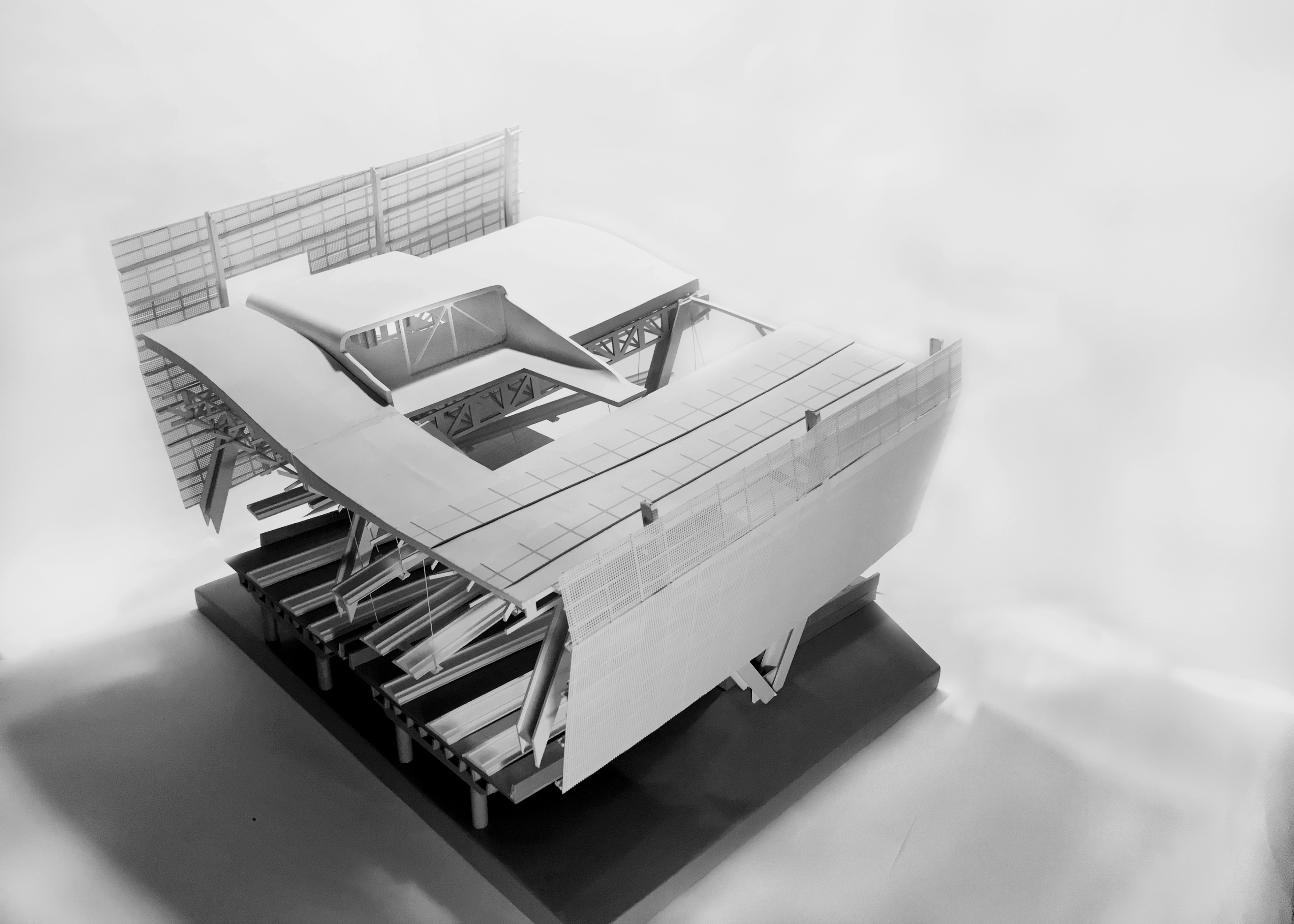
Conceptual model; built at 1/8" scale
Experience
The interior of the structure is filled with hanging rail lines forming interchanges, a mess of limens and interstitial conditions. Too complex for human comprehension, the system is controlled by artificial intelligence. Humans receive directives instructing them how to move through the maze of platforms and scales of transportation connecting them to their ultimate destination. The artificial intelligence calculates not only the fastest manner of moving through space but also the most efficient manner by combining groups of passengers by common destinations.
However, the most efficient method of moving groups of people between specific destinations is not always the most direct and is never the same from trip to trip. As such, traveling on this network of trains produces different outcomes for every user at every instance of use both through the people they are able to interact with [people they would not otherwise meet or travel in close proximity to] and through the transitional places they move through on their way from point a to point b.
From street level, the infrastructure exists as a raised superstructure, a mess of space frames, trusses, and other structural elements allowing complete visual openness to the user or passersby. The complexity of the system is easily read, if not comprehended, by the user or any other people experiencing a visual connection with one of the instances of interchange pictured here. While not inherently fitting in to the neighborhoods it inhabits, the structure speaks to the future of transportation, mechanically-derived efficiency, and an end to the wasteful individualism of the bygone car-era. Exposed structure and mechanica gives a human and detail-oriented scale to the massive public works project, helping to make it more user and pedestrian friendly. Inhabiting existing neighborhoods, the structure aims first to connect neighborhoods driven apart by highways.
Spring Quarter: Final Scheme and Deliverables

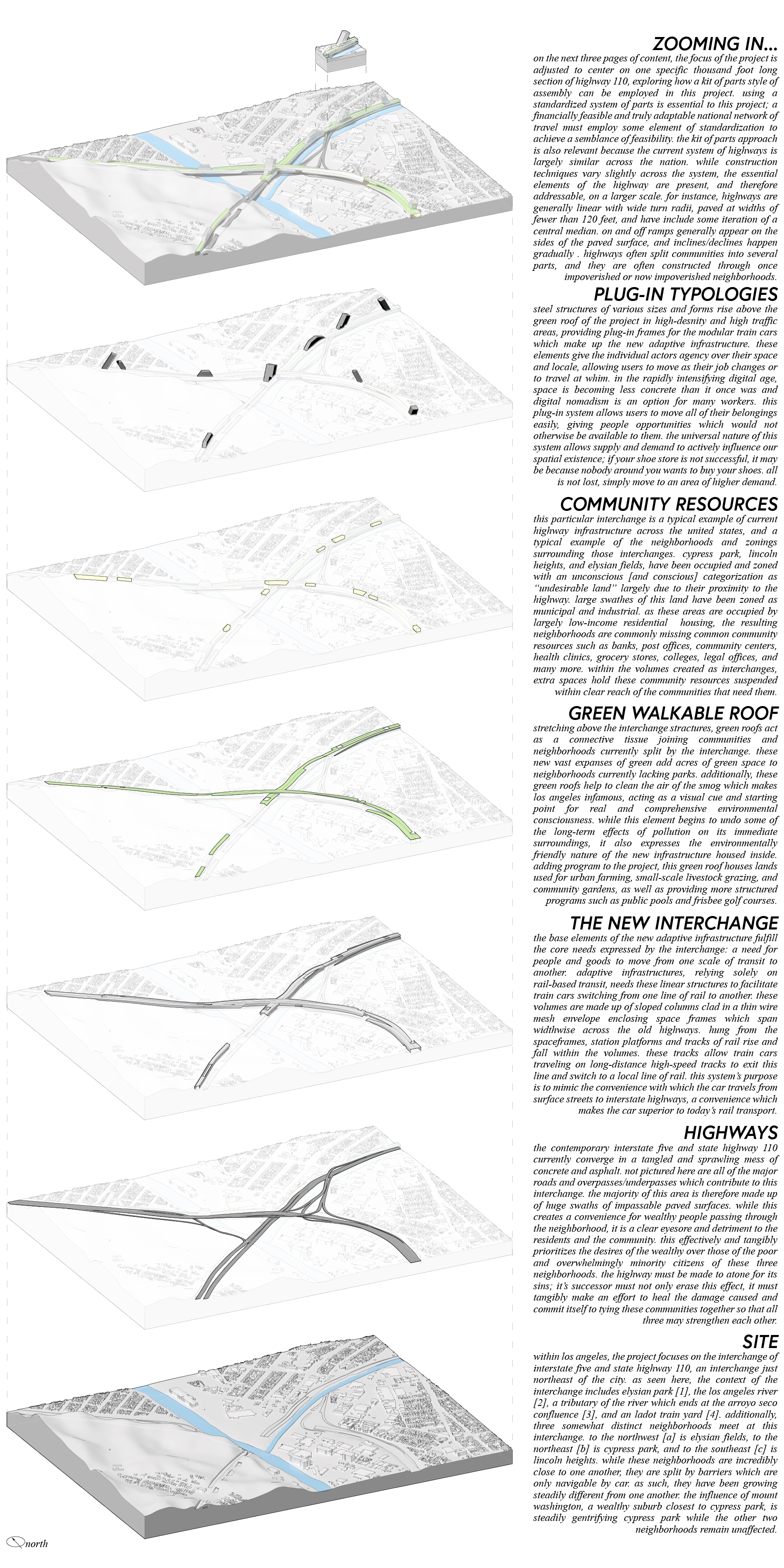
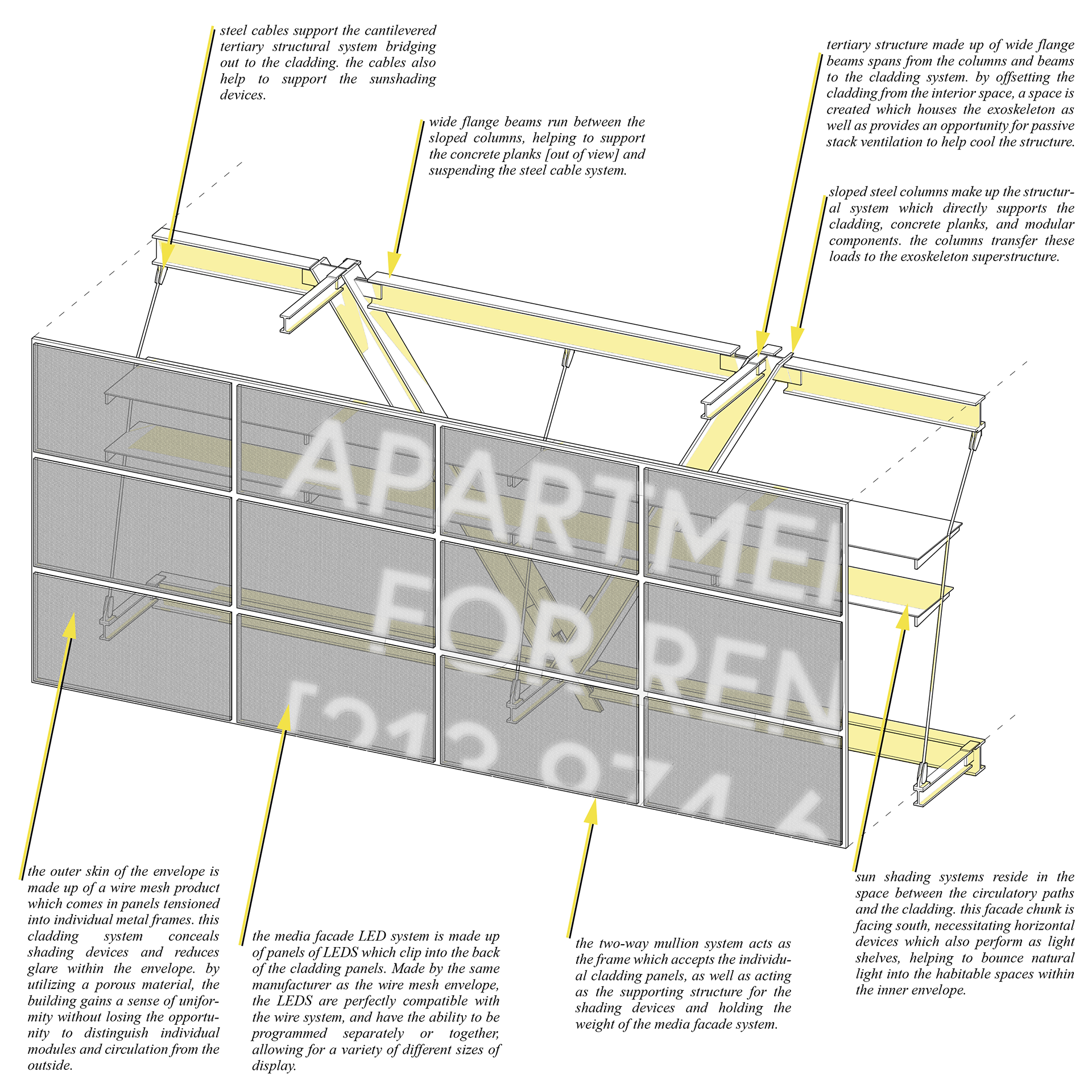
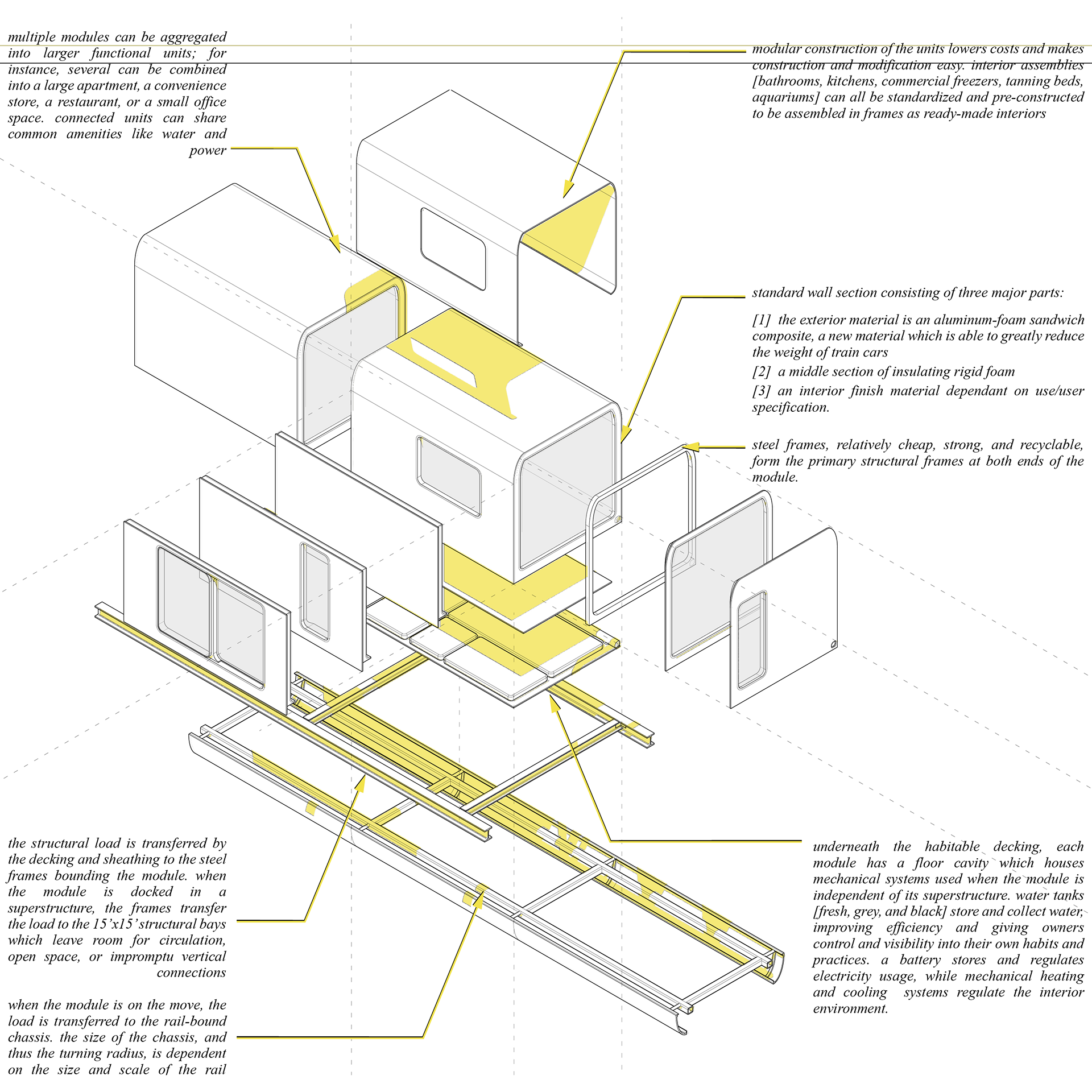




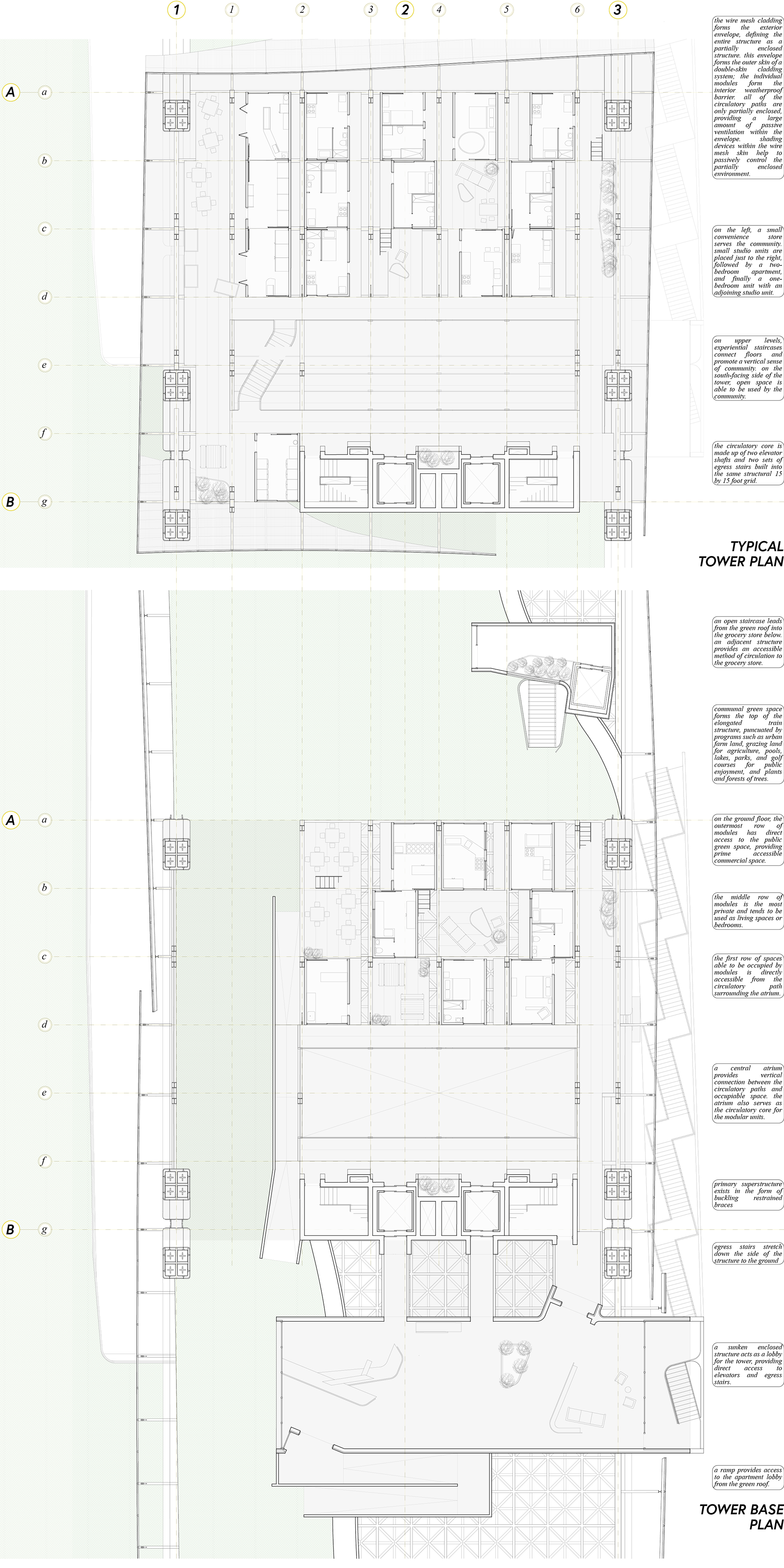


Interior Render


